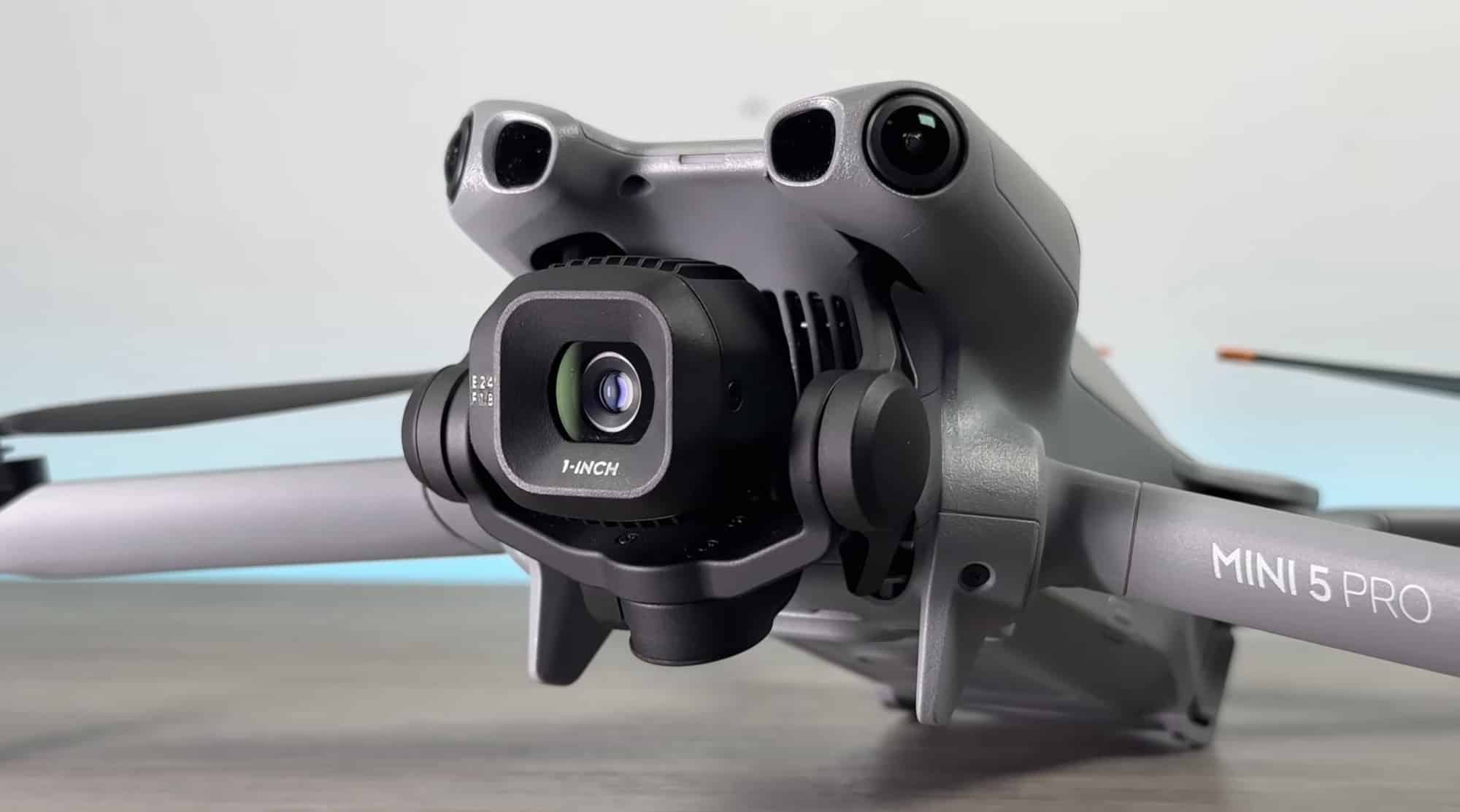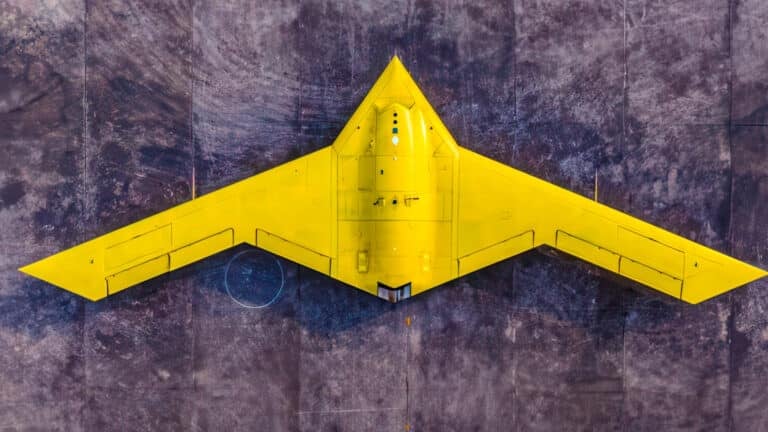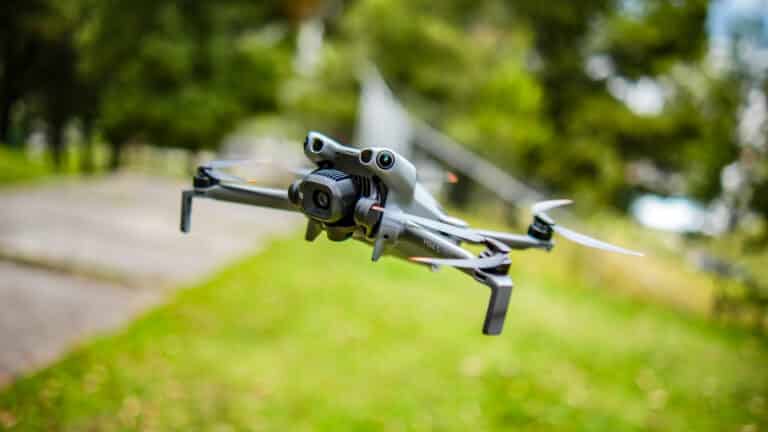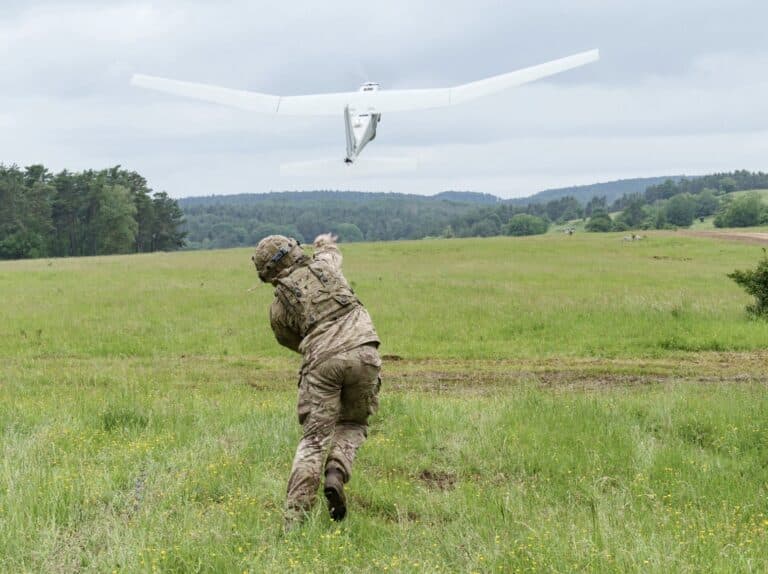No Weight Tolerance for DJI Mini 5 Pro in United States as per FAA Drone Regulations

Amazon Drone Deals: DJI Mini 5 Pro Fly More Combo with DJI RC2 now for $1,099!
Unlike the European Union’s approach, the FAA provides no manufacturing tolerance for the 250-gram weight threshold for drones such as the DJI Mini 5 Pro. US regulations are strict: any drone weighing 250 grams or more requires registration, regardless of how small the excess weight may be.
READ MORE: The Real Reason Your New DJI Mini 5 Pro is Overweight
Sharp FAA Weight Threshold
The Federal Aviation Administration maintains a rigid 250-gram cutoff under 14 CFR Part 107 and recreational flying rules. As industry experts note, “The problem is that the threshold is very strict: if your drone measures at or above 250 grams, it must be registered.”
This means DJI Mini 5 Pro units weighing 252-253 grams would legally require:
- FAA registration ($5 for three years)
- Remote ID compliance for registered drones
- Part 107 certification if used commercially, regardless of weight
No Manufacturing Variance Provisions
Unlike EASA’s prEN 4709-001 standard that allows ±3% tolerance during manufacturer certification, FAA regulations contain no explicit weight variance allowances. The 14 CFR Part 107 framework treats 250 grams as an absolute threshold.
DJI’s specification disclaimer stating “actual weight is approximately 249.9 g ± 4 g” doesn’t provide legal protection under US law. As one analysis notes: “There is no explicitly stated tolerance, such as ±4 grams, in FAA regulations.“
Current US Market Status
Importantly, the Mini 5 Pro isn’t officially sold in the United States due to ongoing trade restrictions and customs issues. This means the weight controversy primarily affects other markets where the drone is available.
However, any US pilots who obtain the drone through other channels would need to:
- Weigh their specific unit before flying
- Register if over 250g, even by a few grams
- Comply with Part 107 rules if used commercially
Key Differences from EU Approach
| Aspect | European Union (EASA) | United States (FAA) |
|---|---|---|
| Weight tolerance | ±3% during certification | None – strict 250g limit |
| Manufacturing variance | Accepted under prEN 4709-001 | Not recognized in regulations |
| Registration requirement | C0 exempt with tolerance | Required at/above 250g exactly |
| Legal basis | Standards-based framework | Absolute regulatory threshold |

DroneXL’s Take
The contrast between US and EU regulatory approaches highlights fundamental differences in aviation safety philosophy. While EASA acknowledges manufacturing realities through tolerance provisions, the FAA maintains absolutist thresholds that don’t account for production variations.
This creates a challenging situation for manufacturers like DJI, who must navigate different regulatory frameworks globally. The Mini 5 Pro’s weight variance might be legally acceptable in Europe but problematic for any theoretical US operations.
For American drone pilots, this reinforces the importance of understanding that regulatory compliance isn’t just about manufacturer specifications—it’s about actual, measurable aircraft weight at time of operation. The lesson? When regulations matter, trust your scale, not marketing materials.
How do you think the FAA should handle manufacturing tolerances? Should US regulations adopt EU-style flexibility, or maintain strict weight thresholds? Share your thoughts below.
Discover more from DroneXL.co
Subscribe to get the latest posts sent to your email.
Check out our Classic Line of T-Shirts, Polos, Hoodies and more in our new store today!

MAKE YOUR VOICE HEARD
Proposed legislation threatens your ability to use drones for fun, work, and safety. The Drone Advocacy Alliance is fighting to ensure your voice is heard in these critical policy discussions.Join us and tell your elected officials to protect your right to fly.
Get your Part 107 Certificate
Pass the Part 107 test and take to the skies with the Pilot Institute. We have helped thousands of people become airplane and commercial drone pilots. Our courses are designed by industry experts to help you pass FAA tests and achieve your dreams.

Copyright © DroneXL.co 2025. All rights reserved. The content, images, and intellectual property on this website are protected by copyright law. Reproduction or distribution of any material without prior written permission from DroneXL.co is strictly prohibited. For permissions and inquiries, please contact us first. DroneXL.co is a proud partner of the Drone Advocacy Alliance. Be sure to check out DroneXL's sister site, EVXL.co, for all the latest news on electric vehicles.
FTC: DroneXL.co is an Amazon Associate and uses affiliate links that can generate income from qualifying purchases. We do not sell, share, rent out, or spam your email.



















The idea that a home scale is going to be accurate enough to meet a hard-line FAA regulation (that itself does not specify what devices are permitted to “legally” weigh these aircraft) is ridiculous. The FAA must adopt some common-sense regulatory policies that this one from the EASA. In the meantime, get out the sandpaper and start experimenting.
Gotta be a few pieces that an aftermarket supplier can make out of carbon fiber to shave off a few grams.
Should the FAA account for manufacturing variability in how it sets the limit loads in FAR 25, or should manufacturers ensure that their designs with their inherent variability are made so that all units satisfy the requirements?
I’d rather have simple, clear requirements from the aviation safety regulators…
Agreed. It is hard to understand why DJI created this situation.
lol and who exactly is going to weigh my drone and force me to register it?? oh exactly no one. And a local cop giving u a hard time doesnt know the law and certainly doesnt have a scale
Until something happens…
The user is not required to have a scale accurate to the tenth of a gram – therefore – the user RELIES on the manufacturer, who IS (I imagine) required to have a very accurate scale – and therefore the user takes the manufacturer weight, AS GOSPEL, 249.9 grams.
It’s similar to Remote ID – the user is actually NOT RESPONSIBLE (last time I checked) to verify his remote ID module is ACTUALLY compliant. As it’s the manufacturer who says it is.
Yeah sounds a little crazy but it goes back to the idea that the user does not have expensive calibrated equipment, and training/certification/etc, and therefore MUST rely on the manufacturer, who DOES have that equipment and knowledge.
Also, there is about a point 5 percent difference in weight on a scale measured at the Earth’s pole vs the equator. In this case 12.5 grams lighter at the equator (or about 6 grams lighter at 45N lattitude – though the relationship is not linear).
And no one is expecting a given user’s scale to compensate for latitude.
But anyway – what is the latitude of the manufacturer? And what is the latitude of the UK? Huh – I bet that’s 3 grams heavier in the UK right there – maybe :)😢
Thanks, Bill, interesting response! 🙂 With 0.5%, the difference would amount to 1.25g, right?
If your unit happens to be a little fat, carefully take a Dremel to the battery case and remove a small section. I weighed mine with a calibrated postal scale and I was under 250g, so no need.
Consistent with other regulations, the weight of the configuration is determined by FAA at time/place of certification. The certification is valid only if the operator maintains the certified configuration. The operator is at risk if they operate a modified configuration.
Any news on the status in Canada?
Doesn’t matter…the US only requires registration, there is 0 difference in actual rules. In the EU there is a lot required if a drone is over 250grams so as long as it is under the EU spec, that’s all that matters. It’s not like it’s even for sale in the USA but even if it was, who cares if you have to fill out a small form
The bad people are not going to register, they are not going to weigh anything. The bad people will do bad things with Drones if they feel like it. Drones don’t do bad things, people do bad things.
The FAA regulations do NOT articulate the weight limit in grams. The regulation is in pounds as it removed the 250 gram reference of the interim rule. The language is “weighs 0.55 pounds or less on takeoff” and many jumped to the notion of that being a weight limit of 250 grams or less. HOWEVER, and this is key, the FAA does not round up. A drone weighing 0.55999999999 pounds to the FAA is still 0.55 pounds or less. Once it reaches 0.56, then it is deemed over 0.55 pounds. Thus, the ACTUAL maximum weight is 254 grams, not 250 grams. So the DJI Mini 5 Pro still meets the weight tolerance.
Thank you, Ryan. Is there any documentation to support that the FAA considers 0.559999… to be 0.55 pounds?
I cannot find anything to back this up, Ryan. It seems like a stretch to assume that 0.55999999… would be considered 0.55 pounds or less by the FAA.